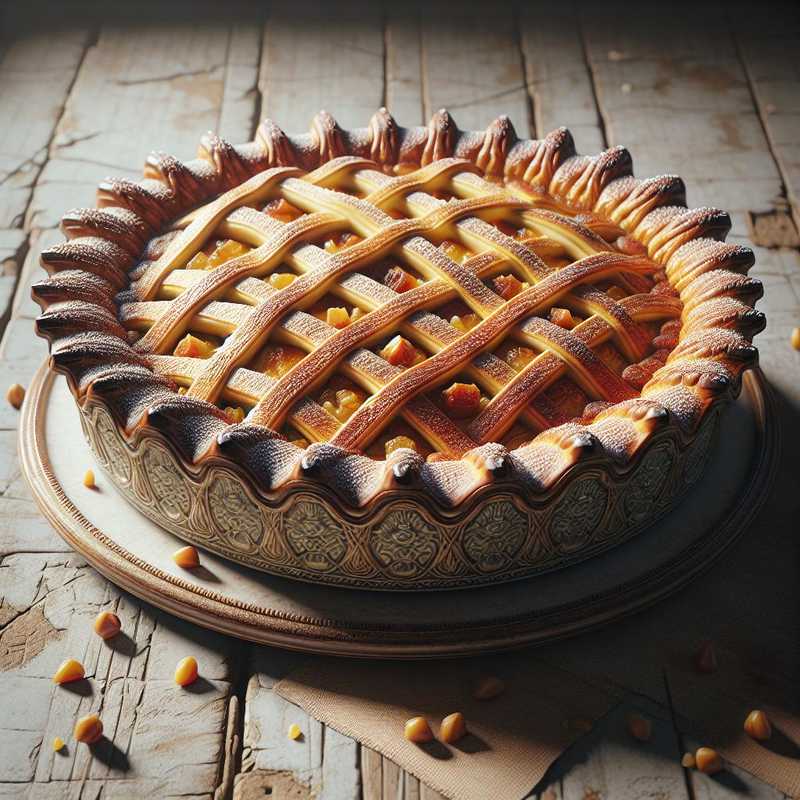Neapolitan Pastiera
17/11/2023The Neapolitan Pastiera is a traditional dessert that symbolizes the Easter holiday, distinguished by its rich filling of ricotta, wheat, and aromas such as orange and orange blossom. Here is the recipe with a pinch of Italian twist:
Ingredients
-
For the shortcrust pastry:
- 300 g of type 00 flour
- 150 g of sugar
- 150 g of butter
- 3 egg yolks
- Grated zest of 1 lemon
-
For the filling:
- 300 g of cooked wheat for pastiera
- 500 g of ricotta
- 300 g of sugar
- 4 whole eggs and 2 yolks
- 30 g of butter
- A pinch of salt
- Grated zest of 1 orange
- Grated zest of 1 lemon
- 1 vial of orange blossom flavor (about 1 teaspoon)
- A pinch of cinnamon (optional)
- 100 g of mixed candied orange and citron (optional)
- Icing sugar for decoration (optional)
Preparation
-
Shortcrust pastry: Mix the flour with room temperature butter to get a sandy consistency. Add the sugar, egg yolks, and lemon zest. Work until the dough is smooth and uniform. Wrap the dough in cling film and let it rest in the refrigerator for about 30 minutes.
-
Filling: In a saucepan, warm the wheat with the butter and a pinch of salt until the butter is completely melted. Let it cool.
-
In a bowl, mix the ricotta with the sugar until you get a soft cream. Incorporate the eggs one at a time, then add the orange and lemon zest, orange blossom flavor, and if desired, a pinch of cinnamon and candied fruits. Combine with the cooled wheat.
-
Take the shortcrust pastry out of the refrigerator, roll out two thirds of it, and use it to line the bottom and sides of a pastiera pan (usually with a diameter of 24-28 cm). Pour the filling into the shortcrust pastry.
-
Roll out the remaining pastry and cut it into strips to create the typical lattice on top of the pastiera filling.
-
Bake in a preheated oven at 180 °C for about 1 hour or until the shortcrust pastry turns golden and the filling is well cooked.
-
Let it cool completely before dusting with icing sugar, if desired.
The pastiera is even tastier if prepared a few days in advance, so that the flavors have time to blend perfectly.
Curiosity
Legend has it that the pastiera was first created in a Naples convent to celebrate the rebirth of spring. The sprouted wheat is meant to represent the resurrection of Christ, while the fragrances used evoke the agricultural traditions and ancient pagan rites of the season.
